**** HRP Media Release
Thank you for your service Cst Burridge.
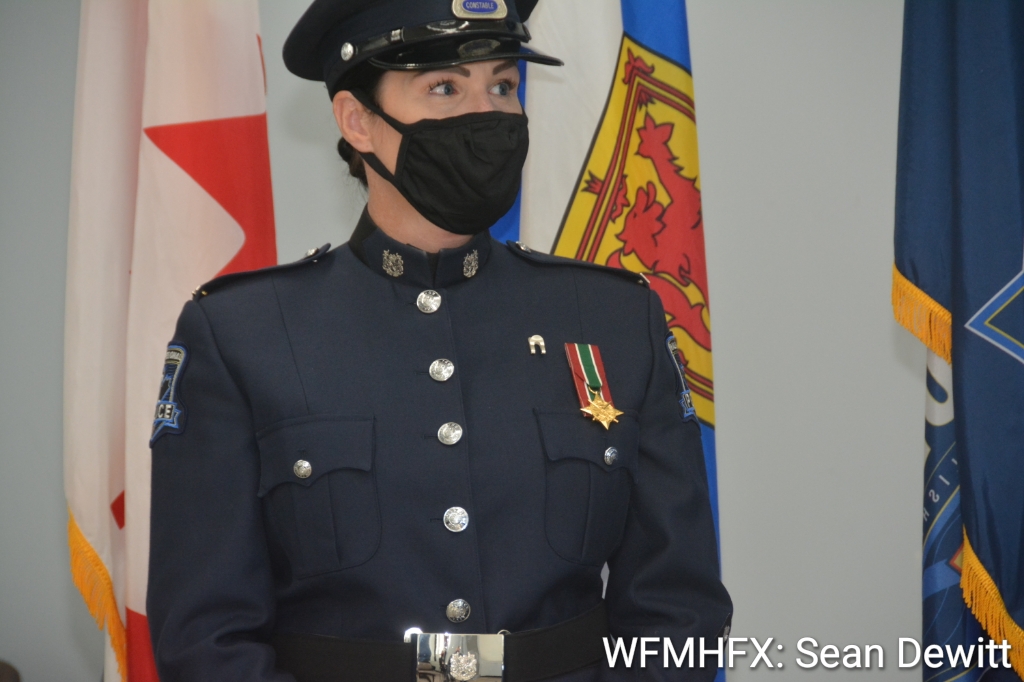
Incredible honour to celebrate with 5th Canadian Division/ 5e Division du Canada as Cst. Hannah Burridge of Halifax Regional Police was presented with a Sacrifice Medal.

annah was recognized for her service in Afghanistan in 2010 as a Military Police member.
The medal was presented by Brigadier-General Peyton
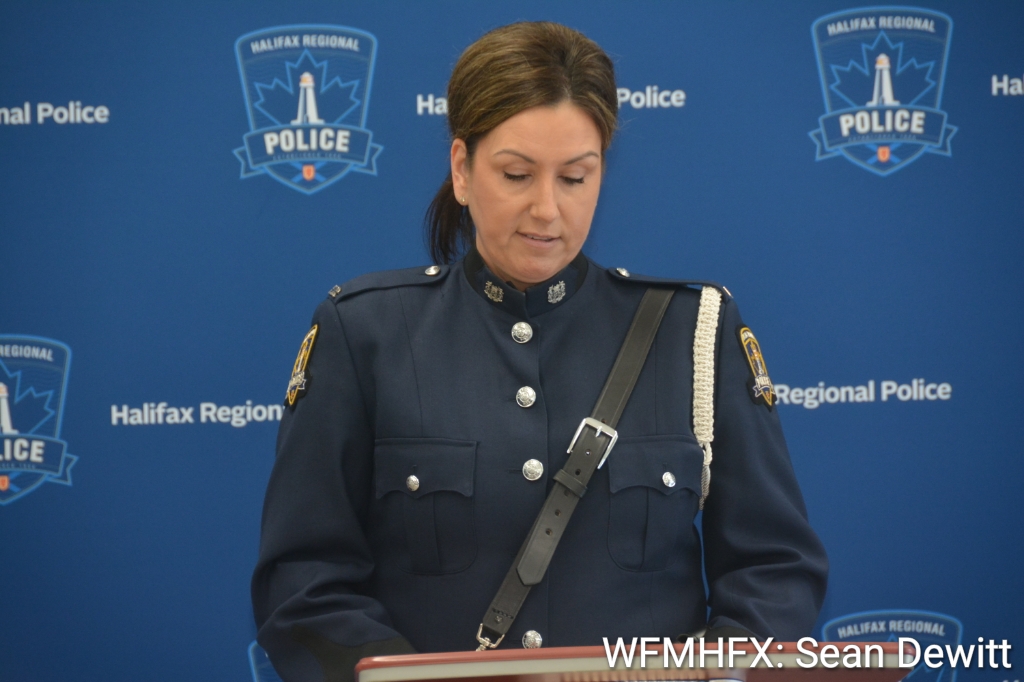
Sacrifice Medal (SM)
(Info via Canada,CA)
The official description, eligibility, criteria, and history of the Sacrifice Medal (SM).
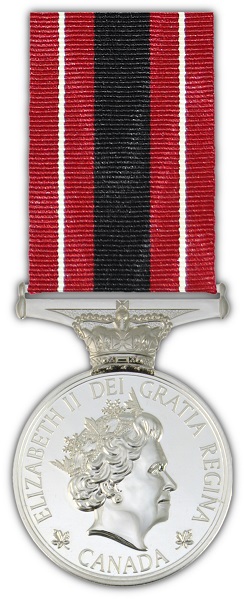
Context
The Sacrifice Medal was created in the context of increased casualties in overseas operations to fulfill the desire of Canadians and the Government to provide formal recognition, through the award of an official medal emanating from the Crown, to those who die as a result of military service or are wounded by hostile action. This honour replaced the Wound Stripe.
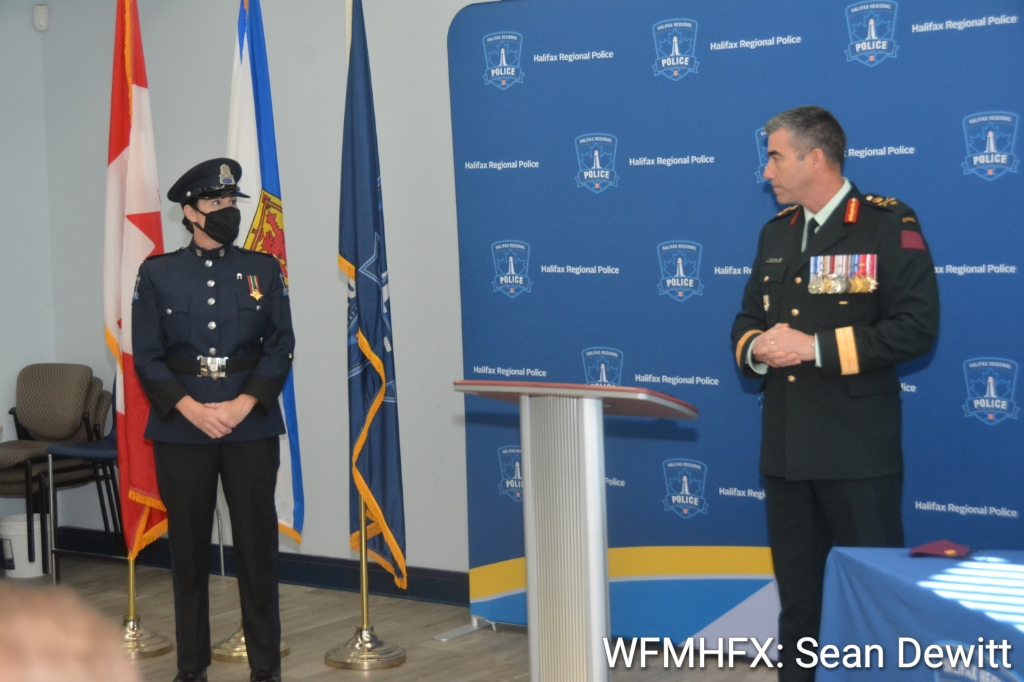
Eligibility and criteria
The Medal may be awarded to members of the Canadian Forces or members of an allied force working as an integral part of the Canadian Armed Forces—such as exchange personnel, civilian employees of the Government of Canada or Canadian citizens under contract with the Government of Canada—on the condition that they were deployed as part of a military mission under the authority of the Canadian Armed Forces, that have, on or after 7 October 2001, died or been wounded under honourable circumstances as a direct result of hostile action on the condition that the wounds that were sustained required treatment by a physician and the treatment has been documented.
The Medal may also be awarded posthumously to any member of the Canadian Armed Forces who served on or after 7 October 2001 in the Regular Force, Primary Reserve, Cadet Organizations Administration and Training Service or Canadian Rangers, or any member of the Supplementary Reserve who served in or with one of the components aforementioned on or after 7 October 2001, and died under honourable circumstances as a result of an injury or disease related to military service.
When a death is obviously related to service, the Medal will be issued immediately. When the cause of death is not clear, the Medal will only be issued once Veterans Affairs Canada (VAC) has officially determined that the death was related to military service. In such a case, delays are to be expected before the Medal can be awarded.
For more details, see lists of Eligible cases or Ineligible cases.
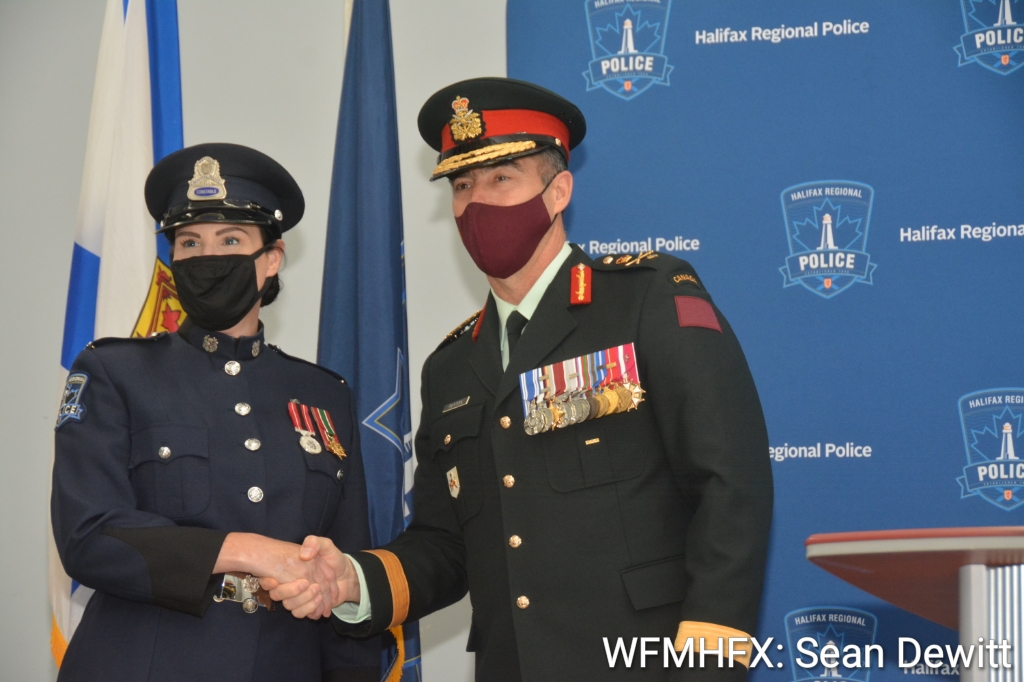
Description
The Sacrifice Medal is a circular silver medal, bearing:
- on the obverse a contemporary effigy of Her Majesty The Queen wearing a Canadian diadem composed of alternating maple leaves and snowflakes circumscribed with the inscriptions “ELIZABETH II DEI GRATIA REGINA” and “CANADA”, separated by small maple leaves; and
- on the reverse a representation of the statue named “Canada” — which forms part of the Canadian National Vimy Memorial — facing right, overlooking the horizon with the inscription “SACRIFICE” appearing in the lower right half of the Medal.
The effigy of Her Majesty represents not only The Queen as Canada’s Head of State (highlighted by the word CANADA and the maple leaves) and Head of the armed forces but also as the FONS HONORIS (the Fount of All Honours). The Queen is the only person who can create an official honour in Canada and all Canadian Honours are bestowed in Her name. The tradition generally followed since the mid-19th century has been to depict who the medal is from on the obverse, what the medal is for on the reverse, and who the medal is for on the edge. The Statue “Canada”, designed by architect Walter Seymour Allward as part of the Canadian National Vimy Memorial, symbolizes Canada, the mother of a nation grieving for her fallen. This saddened figure personifies the sorrow for the lives lost and broken by conflict and makes a connection with Vimy, acclaimed by many as the birthplace of the nation and one of the most important military engagements in Canadian history. She faces a large field representing the loneliness and isolation of mourning but also the future. The statue depicts the figure of a woman, hooded and cloaked, head heavy, with her eyes cast down and her chin resting on her hand. She holds some laurel branches in her right hand: a symbol of peace, honour, and sacrifice.
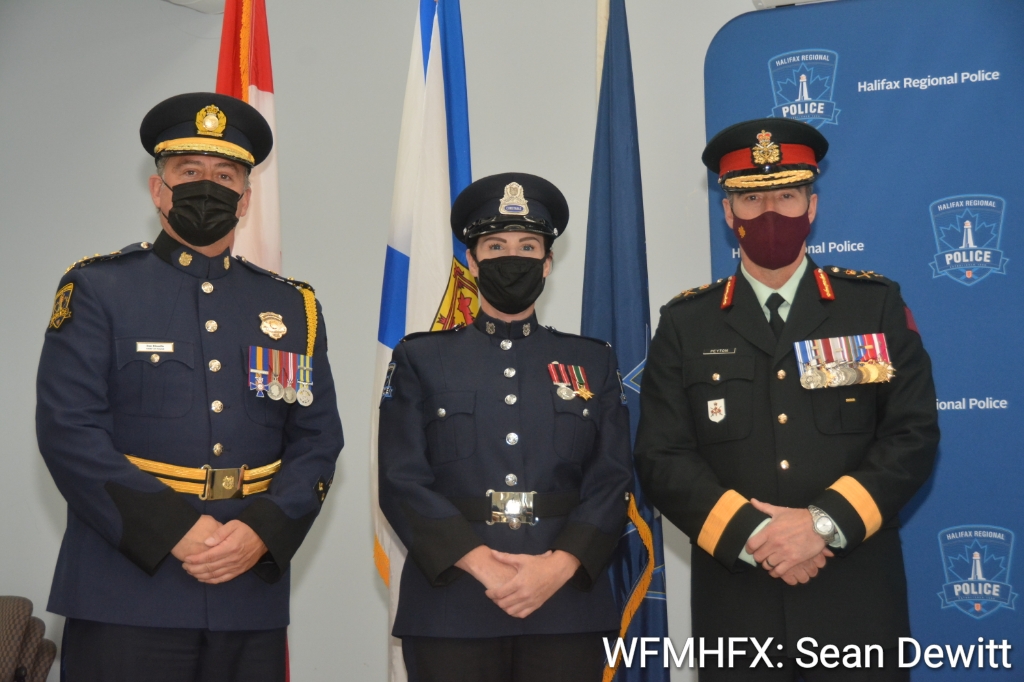
The medal is fitted with a straight suspension bar ornamented with the Royal Crown.
The ribbon is a watered ribbon, 32 mm wide, with a black central stripe (10 mm), flanked by red edges (11 mm each) centered on which are 1 mm white stripes. Black represents the mourning of the dead and the shock of the wounds, the red represent the blood that has been spilled and the white, the hope for a better future. Red and white are also the official colours of Canada as decreed by King George V in 1921.
Bar(s)
Each subsequent award of the Medal shall be indicated by a bar, which shall be attached to the ribbon from which the Medal is suspended, and where two or more bars are attached, those bars shall be equally spaced on the ribbon.

Where the undress ribbon is worn, a silver maple leaf shall be worn centred on the ribbon of the Medal to indicate the award of a Bar, a gold maple leaf shall be worn to indicate the award of a second Bar, a red maple leaf shall be worn to indicate the award of a third Bar and a combination of these devices may be worn to indicate the award of more than three bars (e.g. a red maple leaf and a gold maple leaf representing 5 bars, etc.).
Wearing
The Sacrifice Medal shall be worn in the sequence prescribed in the Canadian Orders, Decorations and Medals Directive, and in the following manner: on the left breast, suspended from the ribbon described above, between the Royal Victorian Medal and the Gulf and Kuwait Medal.
Post-nominals
The use of a post-nominal is not authorized for this medal.
Historical notes
Captain Carl Gauthier of the Directorate of Honours & Recognition and Cathy Bursey-Sabourin, Fraser Herald at the Canadian Heraldic Authority at the Chancellery of Honours, Rideau Hall, collaborated to create the design.
The Medal is made of sterling silver and lacquered to prevent tarnishing. It is manufactured by the Royal Canadian Mint.
The Medal is engraved on the edge with the service number, abbreviated substantive rank, initials and surname of military recipients and the forenames and name of civilian recipients.
As of 1 June 2015, 813 medals have been issued, including 21 with the bar.



